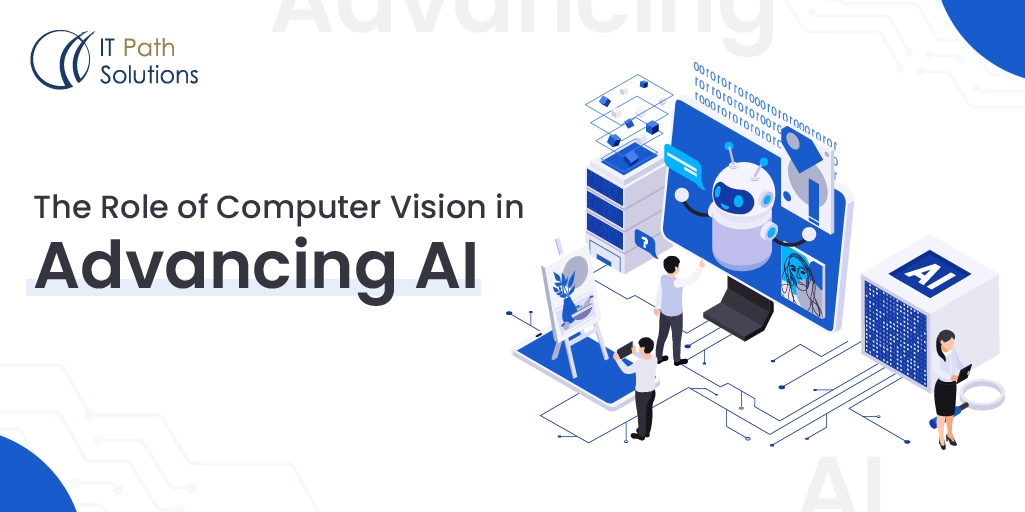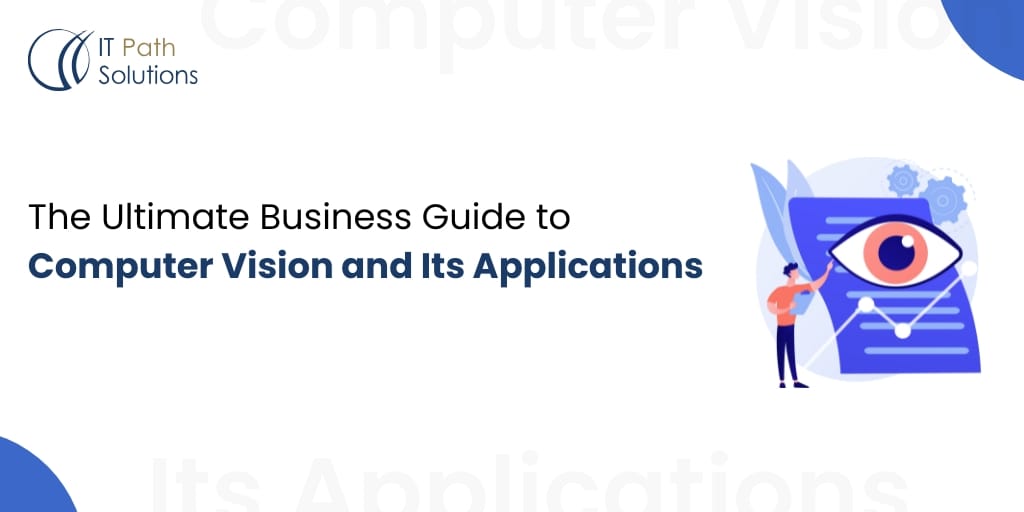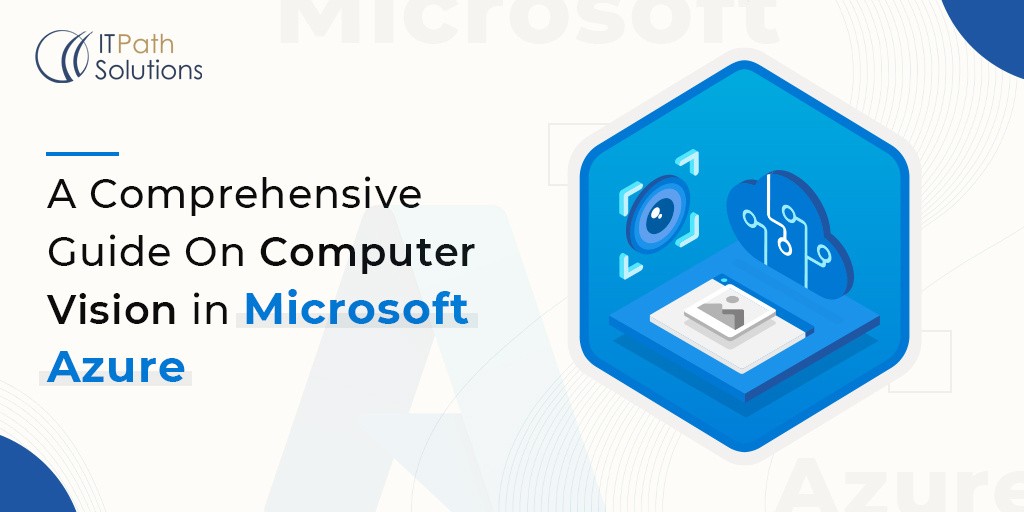The Role of Computer Vision in Advancing AI

Introduction
In the ever-evolving landscape of artificial intelligence (AI), one technology has emerged as a game-changer, propelling the capabilities of AI systems to new heights – Computer Vision. Often referred to as the eyes of AI, Computer Vision empowers machines with the ability to interpret and understand the visual world, mimicking the human capacity for sight. This transformative technology has not only revolutionized industries but has also become a cornerstone for the advancement of AI. In this blog post, we delve into the pivotal role that Computer Vision plays in pushing the boundaries of AI and ushering in a new era of intelligent technologies.
Understanding Computer Vision and AI
Computer Vision is a multidisciplinary field that enables machines to gain high-level understanding from digital images or videos. Just as humans rely on their eyes to perceive and comprehend the visual world, Computer Vision equips machines with the ability to interpret visual data. This includes tasks such as image recognition, object detection, facial recognition, and scene understanding. The primary goal is to enable machines to make sense of visual information and derive meaningful insights from it. Computer Vision (CV) and Artificial Intelligence (AI) are two closely related fields that intersect to enable machines to interpret and understand visual information. Here’s a brief overview of each:
Enhancing AI Capabilities
The integration of Computer Vision into AI systems has significantly enhanced their capabilities, enabling them to perform tasks that were once considered the exclusive domain of human perception. This amalgamation has resulted in the creation of intelligent systems capable of autonomous decision-making based on visual data.
Image Recognition and Classification
One of the key contributions of Computer Vision and AI is in the realm of image recognition and classification. By leveraging advanced algorithms and deep learning techniques, AI systems can accurately identify and categorize objects within images. This has vast applications across various industries, from healthcare and agriculture to retail and manufacturing. For instance, in medical diagnostics, Computer Vision aids in the identification of anomalies in medical images, contributing to early disease detection.

Computer Vision AI can recognize various categories images
Object Detection and Tracking
Computer Vision and AI has empowered AI systems with the ability to not only recognize objects but also detect and track their movements in real-time. This capability finds widespread use in surveillance, autonomous vehicles, and industrial automation. In the context of self-driving cars, Computer Vision enables the vehicle to perceive its surroundings, identify obstacles, and navigate safely.

Computer Vision AI can recognize object detection and tracking
Facial Recognition
The deployment of facial recognition technology, driven by Computer Vision, has transformed security systems, user authentication, and customer experience. From unlocking smartphones to enhancing airport security, facial recognition powered by AI is becoming increasingly prevalent. However, ethical considerations and privacy concerns have prompted ongoing discussions and regulations surrounding its use.

Computer Vision AI can recognize facial
Scene Understanding
Computer Vision allows AI systems to go beyond object recognition and understand the context of entire scenes. This is particularly valuable in applications such as robotics, where machines need to navigate and interact with their environment. Through scene understanding, AI can make informed decisions based on the holistic interpretation of visual data.

Computer Vision AI systems can scene understanding
Enabling Human-Machine Interaction
The integration of Computer Vision in AI has also paved the way for more natural and intuitive human-machine interaction. By enabling machines to interpret gestures, expressions, and movements, Computer Vision has bridged the gap between humans and machines, fostering a more seamless and user-friendly interface.
Gesture Recognition
With the aid of Computer Vision, AI systems can interpret and respond to human gestures. This has applications in gaming, virtual reality, and human-computer interaction. For example, in virtual reality environments, users can interact with the digital world through natural gestures, enhancing the immersive experience.

Computer Vision AI system can recognize different gestures
Emotion Recognition
Understanding human emotions through facial expressions is another area where Computer Vision plays a crucial role. AI systems can analyze facial features to recognize emotions, providing valuable insights in fields such as customer service, market research, and mental health diagnosis.

Computer Vision AI can recognize Emotion
Augmented Reality (AR)
Computer Vision is instrumental in the development of augmented reality applications. By overlaying digital information onto the real-world environment, AR enhances user experiences in fields ranging from education and healthcare to entertainment and retail.

Computer Vision AI can use AR application
Challenges and Future Prospects
While the integration of Computer Vision in AI has unlocked unprecedented possibilities, it comes with its set of challenges. Addressing issues such as bias in image data, ensuring privacy in facial recognition systems, and developing robust algorithms that can handle diverse and dynamic visual scenarios are among the ongoing concerns.
Looking ahead, the future of AI intertwined with Computer Vision holds immense promise. Advancements in hardware, the proliferation of big data, and continuous innovations in deep learning are poised to propel Computer Vision to new frontiers. The convergence of AI, Internet of Things (IoT), and 5G technologies is expected to create a synergistic ecosystem, further amplifying the impact of Computer Vision across industries.
Conclusion
In the grand tapestry of artificial intelligence, Computer Vision stands out as a transformative force, bringing machines closer to human-like perception and understanding of the visual world. From revolutionizing industries to enabling new forms of human-machine interaction, the role of Computer Vision in advancing AI cannot be overstated. As we navigate the future of intelligent technologies, the synergy between AI and Computer Vision promises to redefine the boundaries of what machines can achieve, opening doors to unprecedented possibilities and reshaping the way we interact with the digital realm.
 Healthcare
Healthcare  Education
Education  Real Estate
Real Estate  Logistic
Logistic  Themes
Themes
 Plugins
Plugins
 Patterns
Patterns



